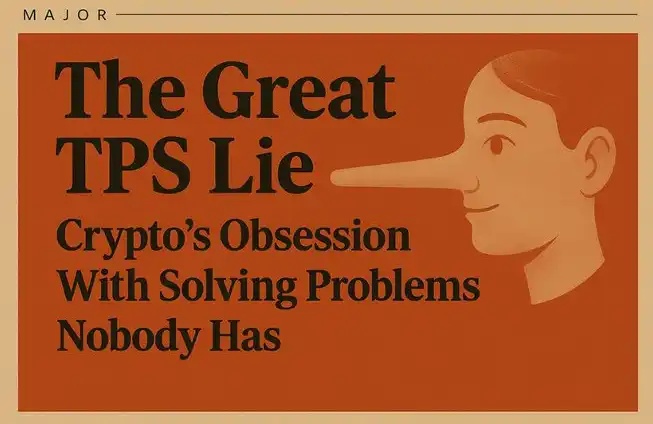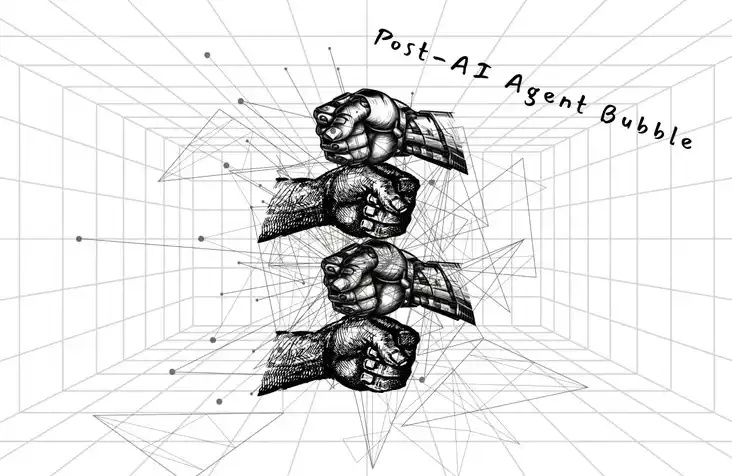Ray Dalio's Latest Interview: Current Market Resembles the 1930s in an "Amazing Way," Three Major Orders Are Collapsing
Original Article Title: "Ray Dalio's Latest Statement: Many of Today's Phenomena are Astonishingly Similar to the 1930s"
Original Article Compiled By: Smart Investor
“Systemic order breakdown, only happens once in a lifetime. But in history, it has never been absent.”
“I do agree that ‘not making things is a big problem,’ but the question is, do we have the manufacturing capacity?”
Ray Dalio, the founder of Bridgewater Associates, published an article on LinkedIn on April 7, discussing the issue of tariffs.
He stated that we are currently witnessing a typical collapse of the monetary, political, and geopolitical order. This type of systemic collapse occurs only once in a lifetime, but historically, whenever there are similar unsustainable conditions, they occur.
On April 8th, Eastern Time, Ray Dalio appeared on CNBC for an interview. In a 15-minute conversation, he reiterated his views. Faced with sharp questions from three top hosts, Dalio also spoke his mind.
He did not use buzzwords or pessimism, more like a seasoned mechanic, opening up the system, examining the structure, dismantling the pressures, trying to answer a fundamental question: Can we still sustain the current operation?
In this interview, Dalio used his consistent thinking framework to provide the essential background of the current discussion on tariffs: the existing three orders are disintegrating, and the five important forces in human history are always at play. “In fact, tariffs are addressing the issue of global imbalance.”
He admitted, fully agreeing that “not making things is a big problem” and also endorsing the goal of manufacturing reshoring, “but do we have the manufacturing capacity? This is a deeper structural issue.”
Dalio's sober view lies in his dissection of the American population structure and believes the feasibility is too challenging.
“Our population structure is like this: about 1% of people are extremely smart, they go to the best schools, come out and create ‘unicorn’ companies (with about half of them being foreigners); then there are another 10% of people who do well; but 60% of the population has a reading ability below the sixth-grade level, making it difficult for them to become productive participants in modern manufacturing.”
He further warned that many of today's phenomena are astonishingly similar to the 1930s.
Facing such a hugely uncertain market, Dalio finally provided ordinary investors with his own way of practice.
He emphasized that only when you are in a sufficiently secure financial position can you truly build a diversified investment portfolio that suits you. Cash may not necessarily be a good choice, after all, the investment goal must consider whether the purchasing power after inflation adjustment has been preserved.
Question 1: Ray, frankly, we are also trying to figure out what will happen next. So, if you could provide a historical perspective, or at least give a historical reference framework, that would be great. How do you view the current situation?
Ray Dalio:
I believe that the reason we do not understand the current cycle is because such a cycle only occurs once in a lifetime. But there is an "order" in this, that is to say, there is a whole set of systems. And these systems collapse due to specific reasons, leading to cyclical changes.
For example, there is a monetary system, and then there is a debt cycle.
So the current situation is this: one person's debt is another person's asset.
When the entire system accumulates to an unsustainable level, debt problems arise— and we are now facing such debt problems.
Of course, this is part of the monetary cycle.
There is also a cycle of domestic political order, which manifests as a transition from one political order to another, during which fierce opposition and turmoil usually occur between the left and right factions.
Especially in democratic countries, there is constant struggle due to a lack of order. Because the democratic system requires cooperation, compromise, and these mechanisms are gradually failing.
What we are experiencing is precisely this transition of political order.
In addition, there is a larger system— the international order.
This international order began in 1945, after the end of World War II. The victorious side—the dominant power— was able to establish rules.
A series of multilateral mechanisms were established at that time, such as the United Nations, the World Trade Organization, the World Bank, etc.
However, now multilateralism is disintegrating and being replaced by unilateralism.
The reason is actually the same: structural problems within the system that are difficult to sustain.
Thus, we see that three major orders are disintegrating:
First, the Currency and Debt Order (Too much debt, where debt is money);
Second, the Internal Political Order (How our system works? Who controls the issues?);
Third, changes in the International Order (Erosion of interdependence).
In addition, in human history, there are five other important forces that have always been at play, such as climate change and natural disasters; human innovation and the birth of new technologies, and so on. The interaction of these forces is the entire backdrop of what we are experiencing now.
Returning to the issue of tariffs, tariffs are actually addressing the problem of global imbalances. Imbalance refers to both capital imbalance and trade imbalance, both of which are unsustainable.
At the same time, there is also the issue of international conflicts. For example: How can the United States achieve national security without producing any goods? We rely on imports from China; How can China ensure its own security while being highly dependent on U.S. capital? This interdependent relationship is being broken.
This is the essential background of our current discussion.
Question 2: As you said, from a historical perspective, are these policies politically attractive? Are they popular in the United States or other countries? What about from an economic point of view? We see the market rebounding today, but many people have already lost 10% of their assets. Mechanistically, what does this actually mean?
Ray Dalio:
Mechanistically, this means: costs will rise, corporate revenues will decline, and capital will become harder to obtain.
What does this mean for businesses? It means their operating costs will rise, revenues will decrease, and it will be harder to obtain financing.
Meanwhile, we are also trying to rebuild the manufacturing industry.
I completely agree that "not making things is a big problem," and I agree with that goal. However, do we have the manufacturing capacity? This is a deeper structural issue.
Our population structure is as follows:
About 1% of people are extremely smart, they go to the best schools, come out and create "unicorn" companies (about half of which are foreigners); then there are another 10% of people who are doing well; but 60% of the population has reading skills below the sixth-grade level, making it difficult for them to be productive participants in modern manufacturing.
We are all in agreement on the issue itself, such as the problem of excessive debt. The Finance Minister and others also believe that we should keep the budget deficit within 3% of GDP.
But the question is: How do we do it? When do we do it? How do we truly achieve "self-sufficiency" in this context?
From a practical standpoint, given the current demographics, education levels, cost of capital, and technological trajectory, rebuilding manufacturing in the United States is very challenging. Yet, it is indeed very necessary.
Question 3: So are you ultimately in support of the President's policies or against them? I want to understand what your conclusion really is and what position you are expressing.
Ray Dalio:
I agree with the essence of this question. But what I am very concerned about is the solution itself, specifically its feasibility.
In other words, I believe this will bring about a series of issues, such as those I mentioned previously: cost increases, income decreases, funding difficulties, and impacts on the capital markets.
Furthermore, I believe this will also muddy the waters for the entire global production system at a global level, hindering global supply chains and production efficiency.
At the same time, I also acknowledge global interdependence, global production efficiency issues, and America's lack of competitiveness, which is a long-term, structural challenge. I believe this will have political consequences.
This is the essence of the cycle. Now, all of this is happening at a time when our fiscal budget situation is extremely dire.
Our current budget deficit issue itself is equally serious. Looking ahead a few months, we must bring the budget deficit down to around 3% of GDP.
But at the same time, we are pushing a policy that will significantly increase costs and bring about various side effects. These issues are not easy to resolve.
I am very concerned because of these deeper issues: the debt remains, the overspending remains, the lack of competitiveness remains, and they will not disappear just because policies are being touted.
These issues have historically repeated themselves, and we are currently in a stage very similar to the 1930s.
Question 4: But we really don't know now how we will ultimately resolve these issues with China, do we?
Ray Dalio:
I am not an ideology-driven person. I am more like a mechanic, doing the work of systems analysis.
So, when we discuss these issues, I am thinking in a "systems perspective."
For example, I completely agree with what you just said: China's current manufacturing scale has exceeded the sum of the United States, Germany, and Japan, making it the world's most competitive manufacturing powerhouse.
Meanwhile, the United States has lost its manufacturing capability and has become the world's largest consumer.
We rely heavily on debt to fund our consumption, which has put us in a very, very difficult situation.
Question 5: In this situation, what does foreign investors buying U.S. Treasury bonds mean? How do you view short-term fund supply and demand?
Ray Dalio:
Foreign investors, overall, are already over-allocated to debt assets in their portfolios.
The scale of U.S. Treasury bonds we need to sell to them is equivalent to 6.5% of GDP, a quantity they are not willing to continue buying.
Part of the reason is that they already hold too much; another part is that the world is now full of uncertainty, such as concerns about sanctions.
You see, these things actually happened in the 1930s.
At that time, conflicts between the U.S. and Japan, asset freezes, sanctions, and so on, these historical situations are replaying.
The current situation is: supply-demand imbalance.
We have too much debt, and the market's buying willingness is insufficient, leading to an imbalance in the bond market.
Question 6: Do you think this will lead to an increase in interest rates? Because it seems that some of the Trump administration's plans are aimed at lowering rates, which can reduce the cost of servicing our debt—just interest spending alone was nearly a trillion dollars last year. Do you think we can achieve this goal?
Ray Dalio:
You are correct. But we need to understand that there are two ways to lower interest rates:
The first way is to achieve it by improving the supply-demand balance, which is a healthy way;
The second way is to forcefully lower rates by printing money.
The fluctuation of interest rates fundamentally comes from a balance of three parts: spending, taxation, and interest cost.
If the government can achieve a more balanced fiscal position, no matter how they do it (which involves political choices), but if it can actually improve the supply-demand dynamics of the bond market, then interest rates can decrease in a healthy, sustainable manner.
This can also help us achieve the goal of reducing the deficit to 3% of GDP.
But you cannot forcefully lower interest rates by printing money; that is unsustainable and an unhealthy practice.
Question 7: So, let me ask you a direct question. As you look at the market now, what are you thinking? Do you think the market is currently overvalued? Fairly valued? Or undervalued? Do you see this as a "falling knife" market or a "great buying opportunity"? How should the average person think about the current market environment?
Ray Dalio:
Some things are certain to happen, while others are possibilities. I don't want to say "now is a buying point" or "now is a selling point." I won't do that, and I never give market timing advice.
What I want to tell the general public is that you need to have a well-structured, balanced, diversified investment portfolio and a long-term investment plan that you can stick to.
In my years as an investor, I have experienced the 9/11 event, the 2008 financial crisis... I have been through a lot.
Most importantly, you need to have a robust, diversified investment portfolio that can withstand changes in various environments.
I won't go into details.
But when you ask me, "How should I diversify my investments?" first, you need to understand one thing: you need to be clear about what you don't know.
When you understand that you cannot accurately time the market, you will realize that relying solely on market timing is not a viable strategy. You will ultimately fall into emotional responses.
When I didn't have much capital at the beginning, this is what I did:
I would ask myself: "How much savings do I have now? If I had no income starting tomorrow, how long could I live off this money?"
I would calculate how many months I could live and then figure out how many years I could sustain.
Then, I would ask myself: If asset values dropped by 50%, how long could I survive?
Only when you are in a secure enough financial position can you truly build a diversified investment portfolio that suits you.
But here's a misconception: Don't think that cash is safe.
In the long run, cash may be the worst investment decision you can make.
You need to see if your purchasing power has been maintained — that is, your purchasing power adjusted for inflation.
For example, when the Federal Reserve lowers interest rates and starts printing money, the "price" of cash decreases, and your purchasing power is eroded.
This has happened in the past few years, and we should all be aware of it.
So let me summarize: Maintain a diverse, diversified investment portfolio; at the same time, pay close attention to our country's debt issues.
Welcome to join the official BlockBeats community:
Telegram Subscription Group: https://t.me/theblockbeats
Telegram Discussion Group: https://t.me/BlockBeats_App
Official Twitter Account: https://twitter.com/BlockBeatsAsia
 Forum
Forum OPRR
OPRR Finance
Finance
 Specials
Specials
 On-chain Eco
On-chain Eco
 Entry
Entry
 Podcasts
Podcasts
 Data
Data

 Summarized by AI
Summarized by AI







